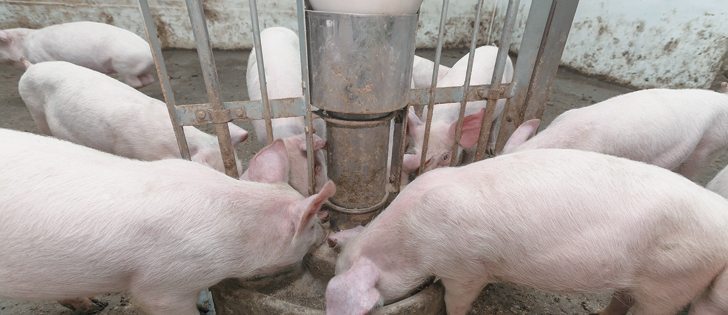Feed formulation | Swine diet specialist says overstuffed mixers produce poor feed
Steve Dritz recently spent 20 minutes telling Manitoba hog farmers about the most recent, cutting edge research on pig diet formulation.
He delved deep into complex matters that demand a profound understanding of the science of nutrition.
However, at the end of his talk, he chucked aside the complexities and zeroed in on a simple problem he thinks has a bigger negative impact than anything else.
“I’ve been in mills all over the world and I’ve seen this commonly, that everybody tries to overfill their mixers,” said Dritz, a Kansas State University swine diet specialist.
Read Also

Trump’s tariffs take their toll on U.S. producers
U.S. farmers say Trump’s tariffs have been devastating for growers in that country.
“We think of mixers as a one-ton, two-ton, three-ton mixer, but mixers are built on cubic capacity, not on tons, because different ingredients have different bulk densities.”
Overstuffing a mixer is bad for feed formulation because it produces a wide variability in particle size and creates pockets of feed with different amounts of nutrients and vitamins.
Research has proven that matching particle size to the growth stage of the pig is important, but Dritz said farmers and feed-makers often don’t bother to check how full they’re filling their mixers, relying instead on weight.
The same weights of finishing and gestation diets can be radically different in cubic size, meaning one will fit well into a mixer while the other will be too big.
Gestation diets have lots of fibre, and “you may only be able to put two and a half tons into a three ton mixer,” said Dritz.
“A finishing diet, that’s maybe all corn? You can (probably) put three tons in there.”
He said it’s not hard to tell if the mixer is too full.
“A simple test is open that mixer up, take a look when you have your fluffiest diet in there,” he said.
“Can you see the top of the ribbons? If you can’t, what happens is you get this bed of feed on top and it doesn’t mix.”
Dritz polled farmers in the room about how many had mills on their farms. Lots of hands went up. Then he asked how many did nutrient variability tests. A few hands went up.
Then he asked how many often tested their feed’s variability. Two hands went up.
Dritz said not overfilling the mixer is the easiest way farmers can boost the value of their feed and something anyone making feed can do.
















